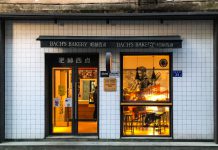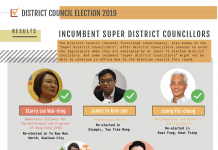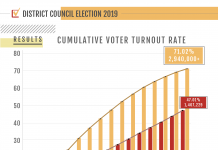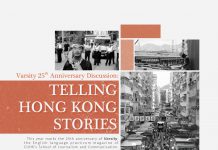The rising popularity of the flash mob community in the city
By Frances Sit
It was an ordinary Saturday afternoon in Chater Garden with people enjoying the sunshine when a raging war suddenly began. Hundreds of people, some in pyjamas and fancy dress descended into the park and started beating each other senselessly – with pillows. As the cotton filling and feathers flew around and fell down like snow, anyone observing the scene would have wondered what on earth was going on.
Welcome to the world of the flash mob, a world of absurdity, spontaneity and surprise. A flash mob is an inexplicable group of people who assemble in a public place, perform an unusual and seemingly pointless act for a brief time and then quickly disperse afterwards, leaving the place as if nothing has happened. The act itself can range from dancing, music-playing and singing to meditating, planking (lying face down in an unusual place), or simply freezing on the streets. Either way, flash mobs usually manage to draw the attention of others.
This unusual kind of meeting was first created and organized in 2003 by Bill Wasik, a senior editor of Harper’s Magazine. The first successful flash mob was held in June, 2003 at Macy’s department store in Manhattan, where 100 people converged around a carpet and informed the shop assistants they were all looking for a “love rug”. Wasik invented the activity as a social commentary and experiment on hipsters, educated young urbanites who see themselves as “alternative” but who lack the self-awareness to see that they are conforming to another set of tastes and fads. It was, Wasik wrote, “an empty meditation on emptiness.”
But what had started out as joke to highlight the cultural atmosphere of conformity has taken on a life of its own and is now a worldwide phenomenon used to highlight diversity and bring together people for social and political causes.
Flash mobs first appeared in Hong Kong in 2003, but the concept did not take off until a large-scale flash mob of people dancing “Beat It” took place in Mong Kok in 2009 after the sudden death of pop star Michael Jackson. Since then, there have been occasional flash mob events in Hong Kong.
The biggest of these was the International Pillow Fight Day event, which has been an annual event since 2011. Each one attracts an average of over 300 flash mobbers.
“The reason to do it is for no reason,” says unofficial ringmaster Tom Grundy. “You get permission to be a kid again. To act silly. To be naughty and ridiculous. To do something really unusual.”
Without any charity or corporate involvement behind it, the English teacher and blogger thinks the completely mindless and fun event is a rare opportunity for Hong Kong people to get together. “The only other time really when some strangers get together in large groups like that is at a protest. It is not positive right?”
However, organising such a large-scale open event is hard work. It can take anything between a month and half a year to arrange a flash mob. But while Grundy finds the process stressful, he also finds it rewarding, “Seeing some of the photos, with some people’s faces, especially the kids. That made it all worth it,” Grundy says.
Today’s flash mobs are the result of modern telecommunications, social media and the power of the internet. “It’s friends inviting friends and it’s snowballing online with social media.”
Even with the help of social media, there is no guarantee a flash mob will go viral. The International No Pants Subway Ride was first held in Hong Kong earlier this year, and although it was widely publicised on the internet, only 12 people showed up, whereas hundreds turned up for the same event in the United States. “There is nothing more depressing than having only 10 or 20 people turn up at a flash mob,” Grundy says. “I think you need a tipping point, a threshold for the flash mob to be successful…Otherwise, flash mobs can be embarrassing.”
Sopee “So Ling” Siviwimon, a form four student at a local art school, also organised a series of flash mobs last year – a costumed “Party Rock Anthem” dance flash mob inspired by American dance music duo LMFAO, a dance flash mob of South Korean singer Psy’s “Gangnam Style” and a freeze mob in various pedestrian zones and malls around Hong Kong. She spread the word mainly through a popular online forum and concludes that organising a flash mob is a combination of stress, hard work and deep commitment.
So Ling recalls how hard it was to organise a “spontaneous” flash mob, handling logistical problems involving nearly 200 participants while dealing with endless school work. She once sacrificed three days’ sleep to organise a mob event. “I had to do a lot of follow-ups on my own. Assembling the people, set-ups, planning. Everything had to be done on my own,” she says.
There were also unexpected risks. So Ling recalls a particularly scary experience at the “Gangnam Style” event at Langham Place, Mong Kok, in October last year. “When we were doing our dance, the security staff rushed out, told us to turn off our boom box and shooed us away. After we finished the dance, the staff chased us down with sticks in their hands!”
Apart from her own passion for participating in flash mobs, So Ling is driven to organise events because she wants to do something for the community. She would like to bring happiness to the city through flash mobs, and to jolt people out of the single-minded pursuit of wealth and fortune.
“I saw many foreigners organising interesting events in Hong Kong, yet Hong Kong people never noticed or cared,” she says. “I don’t want the city to be so boring, and everyone concentrating only on making money. There are a lot of people, a lot of things that are worth our appreciation in Hong Kong… Hong Kong can be a diversified place.”
For people with specific goals in mind, flash mobs are a wonderful medium to spread messages. Around the world, flash mobs have been held to raise awareness on issues ranging from bullying to shark-fin consumption.
Lisa Pearl, a health coach, co-organised a dance flash mob on Valentine’s Day this year with Jennifer Carven McLennan in response to One Billion Rising, a global campaign to raise awareness of violence against women and girls. She believes flash mobs are a highly visible and contagious way to engage people in important issues.
“We wanted to come together in solidarity with the purpose and the energy to shape the world and consciousness,” Pearl says. “Dancing insists that you take up space. It is something you can do together. The dancing is fun and lively and energetic but it’s also purposeful.”
A flash mob is not just about a specific act or dance. Rey Asis, who also organised a One Billion Rising dance mob for Hong Kong migrants in February, regards it as a whole package – a combination of the dance, the outfits, the songs, the movements and most importantly the message.
“You have to wear something that is kind of unusual but at the same time not so distracting for the audience…Whenever we do flash mobs, we think about the people who are watching us or people who are joining us,” Asis explains. “The message should not be lost in the whole thing. The whole package should convey that message.”
Ultimately, for some, the biggest reward of flash mobs is being a part of a community. Jeffrey Tam is a member of HK Do What.com and the person in charge of the first-ever MP3 experimental flash mob held in Hong Kong, in which people played a pre-downloaded MP3 soundtrack at the Mong Kok pedestrian zone at 3.00 p.m. on March 3 and followed performance instructions on the soundtrack. Tam says one of the aims of the event was to show city dwellers that they are connected with other people by asking them to do things they would not normally do, like high-fiving other participants or passers-by.
“We want Hong Kong people to change their living styles; to be not so monotonous. We want Hong Kong people to step out of their comfort zones. We want people to start experiencing their life, to feel the connection between people in this city, to feel that we are not separate individuals in a city, but are more or less connected,” he says.
What had started out as an experiment to mock the pretentiousness of New York hipsters has morphed into something else. Flash mobs transcend many different and separate communities. Whether you are a participant or a member of the audience, you feel a sense of belonging to the event.
“When you think about money all the time, when you only think about yourself, that can be very individualistic or selfish,” says Asis. “But when you are with a group of people, you become part of a community. And you feel that there is more to life than you.”
Edited by Jennifer Lam











































